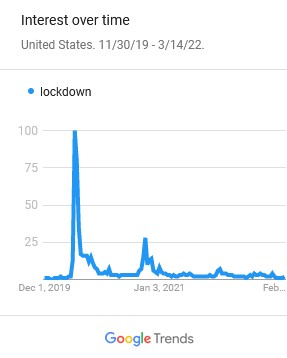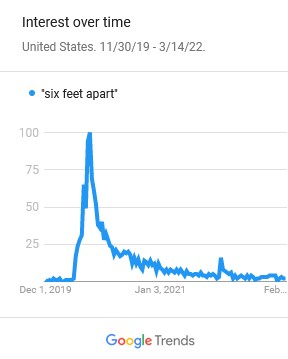Who of us is not familiar with the term “lockdown,” that isolating experience shared across the globe by billions of people? The term came into common usage early in 2020 as governments around the world instituted tough measures to prevent the spread of Covid-19.

Lockdown became the “2020 Word of the Year” according to Collins Dictionary. An article for BBC News states that “lexicographers registered more than 250,000 usages of “lockdown” during 2020, up from just 4,000 last year.”
In a November 11, 2020 blog post, the Collins Dictionary says: “So what about the word of the year itself? “Lockdown”, with its heavy, clunking syllables and heavier associations, is the condition we’ve most dreaded in 2020 – a state of national stasis, where almost everything that constitutes normal public life is suspended. Under lockdown, our waking hours get a lot smaller. We return to a simpler state – which some have, in fact appreciated – but it’s a far more restricted one. We see few people, and fewer places. We’re quite literally housebound. It’s not a shock to remember, then, that lockdown was originally a piece of prison vocabulary: it’s when inmates are confined to their cells because of some disturbance on the wing. 2020 is year that the meaning of the word shifted irrevocably: in most people’s minds, lockdown is now a public health measure – its use having increased exponentially since 2019.“
So, what did people do during lockdown? Some teenagers got together and created an event series called Lockdown “that follows a group of bored quarantined teens working together online to solve a mystery involving one of their neighbors – a mystery which ultimately places them all in danger.“
The author of this blog built a gym in his basement and made a vegetable plot in his garden. Others got creative and started blogging about their experiences during lockdown. A September 20, 2020 article for the New York Times reports on one 86 year old woman who started a blog: “Not long after the coronavirus sent her country into lockdown and brought an abrupt end to life as she’d known it, Hazell Jacobs, 86, awoke in her south London home ready to start something new. She opened a closet and began pulling out a collection of scarves – hundreds of them, gathered over decades of travels around the world. There were countless memories stitched into their hems, each silky expanse a story waiting to be told. Ms. Jacobs sat down, and began to write what soon became Scarf Aid, a blog Ms. Jacobs has faithfully maintained…soon the emails and comments began to come in from fans around the world…Some of her closest friends were struggling under the weight of isolation. ‘I’m used to supporting others,’ she said. ‘So I thought, that’ll be my role, to cheer people up,’ noting that a lot her friends have felt very down” (Purtill).
Social Media Trends as of May 17, 2022
Facebook #lockdown: 4,700,000 million people are posting about this
Instagram #lockdown: 21,126,508 posts
TikTok #lockdown: 44.3 billion views
YouTube #lockdown: 1,100,000 videos and 311,000 channels
Google Trends: Lockdown is not a new word but its meaning changed during the pandemic. It registered as a small blip during the week of March 1, 2020 and within two weeks it reached its peak before tailing off that summer as much of the world was under lockdown and knew what the new definition of the word meant. Even though it was voted “2020 Word of the Year”, it’s certainly not a cause for celebration as it affected everyone, in different ways, from how we worked, attended school and socialized.

Sources:
“Covid-19: ‘Lockdown’ declared Collins Dictionary word of the year.” BBC News. 10 November 2020. URL: https://www.bbc.com/news/uk-54878910.
Fisa Studio. “coronavirus lockdown symbol. Coronavirus pandemic puts countries on lockdown. Stop Covid-19. Isolated Vector Icon.” Shutterstock.com. Standard License. Royalty-free stock vector ID: 1675752562.
“Lockdown.” YouTube Originals For Kids and Family. YouTube. November 19, 2020. URL: https://www.youtube.com/playlist?list=PLUxtB8Ph9xFROkedqxUc9g_CxrxmRFzuB.
Purtill, Corinne. “In Lockdown, an 86-Year-Old Blogger Finds an Audience and a New Purpose.” The New York Times. September 27, 2020. URL: https://www.nytimes.com/2020/09/27/us/lockdown-blogger-finds-an-audience-covid-quarantine-scarf-aid.html.
“Word of the Year 2020 Blog.” Collins Dictionary.com. 10 November 2020. URL: https://blog.collinsdictionary.com/language-lovers/the-year-of-lockdown/.
